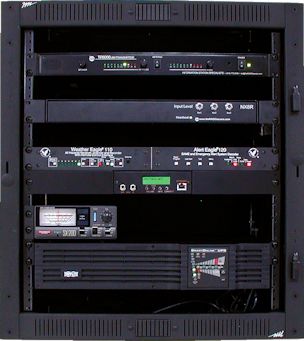
|
| America's Source for AM Radio Systems | Related Products | Technical Services |

|
| America's Source for AM Radio Systems | Related Products | Technical Services |
|
ALERT AM Emergency Advisory Radio System
Travelers Information Station | Highway Advisory Radio
| Emergency Advisory Radio |
|||||||||||||||||||||
 |
When it all goes down, the ALERT AM
System stays up. Hundreds of communities and
transportation departments across America operate ALERT AM Emergency
Advisory Radio Stations to tell citizens what to do during highway
travel and incidents that threaten life and property.
|
|
|||||||||||||||||||
| Standard Package | Options | ||||||||||||||||||||
|
View technical specifications for Standard and Optional components. |
||||||||||||||||||||
Who Operates ALERT AM Systems?
Municipalities for
example, cities, counties, townships, boroughs, towns and villages
departments of public safety, emergency management, public health
and public information. |
|||||||||||||||||||||
|
Antenna Styles The most common formats are described below.
Click thumbnail images (right) to see a
full view of each example.
ALERT AM can be installed by you, your agent or as a service by us. Included in the package are the FCC type-accepted transmitter, digital message system, cabinets, antenna, preassembled groundplane, lightning arrestors, cables, connectors, mounts, hardware and illustrated instructions. |
|||||||||||||||||||||
|
Planning & Purchasing Your System
We We provide
a full menu of technical services to help you put and
keep your ALERT AM station(s) on the air. We will help plan and
implement your station, including frequency and site selection, FCC
licensing, installation, staff training and the FCC-required field
survey and documentation. Even professionally recorded audio
messages are available, so your broadcast is ready to put on the air
as soon as the station is turned on. Best of all, each system comes
with remote technical support for the life of the station. |
|||||||||||||||||||||